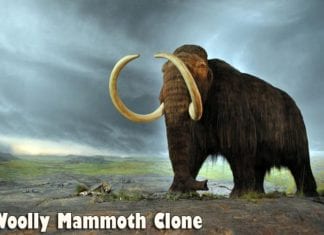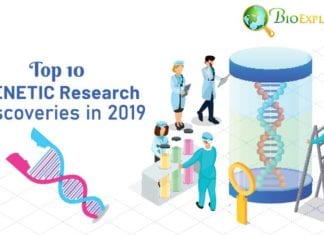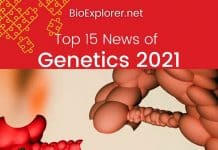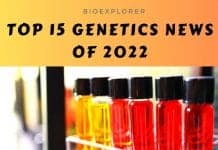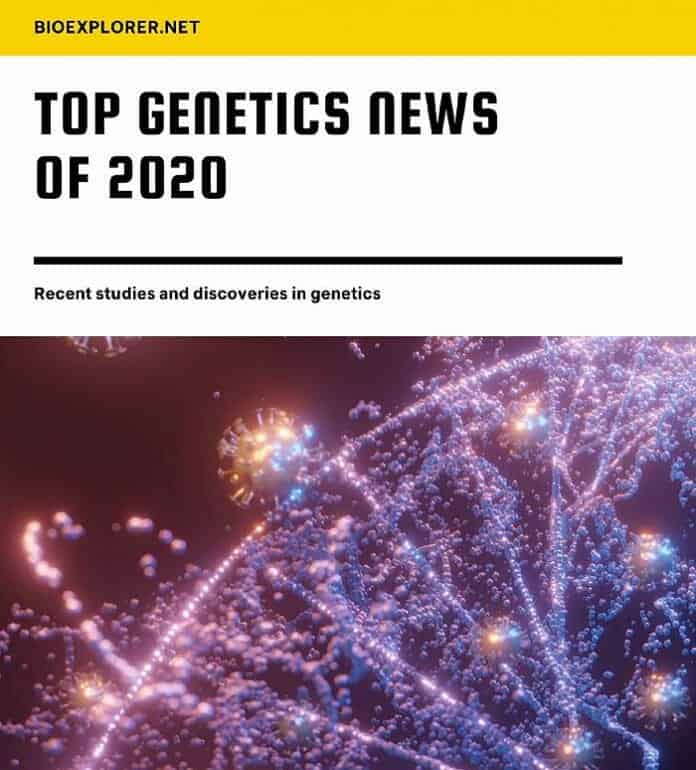
Genetics is currently much more than just the science of heredity. Looking at our genes can help us understand multiple processes – the origins of illness, the secrets of development, and used for detective work understanding the intricacies of human and animal history.
In 2020, genetics also came to the forefront of science – because tracing the virus variants and understanding how to counteract it was impossible without looking at its genetic material.
Top Genetics News in 2020
In this collection of most profound 2020 genetics discoveries, we again find evidence of the incredible power of a small group of molecules – nucleic acids, as well as the compounds associated with them.
1. A useful RNA that caps the chromosome – a new protective mechanism against chromosome shortening discovered [Switzerland, October 2020].
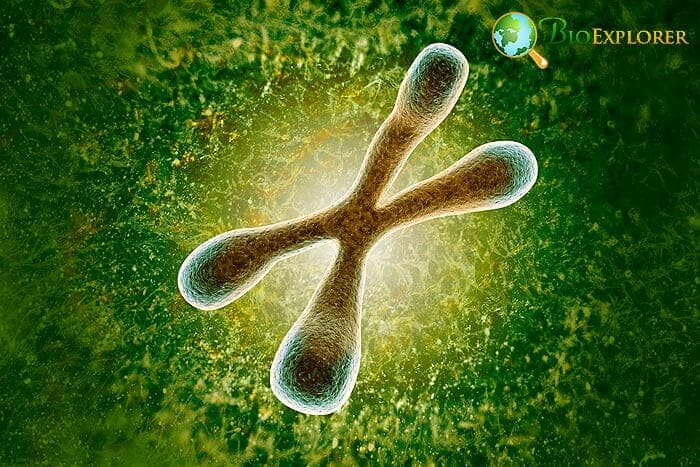
Our chromosomes are basically a complex made from tightly packed DNA and proteins that hold and control this precious package.
- As a chromosome is basically a complex bundle of DNA threads, it is essential to prevent their tangling and destruction with time. That is why chromosomes have unique structures called telomeres.
- Telomeres can be found at the chromosome ends, and the DNA located in these areas usually consists of regular repeats. Previously, it was thought that those repeats do not carry a particular function.
- In the previous decade, it was discovered that the sequences from telomere repeats are “written down” into a unique long RNA molecule called TERRA.
- These RNAs are not used to build protein. Instead, they are used as a template to build the telomeres at the chromosome ends, controlling the enzyme dedicated for this specific job called telomerase.
The researchers at the Ecole Polytechnique Federale de Lausanne, Switzerland, decided to look into the TERRA molecules closer:
- The researchers have developed a system that allowed them to see TERRA molecules in the cell and act.
- They have managed to see through the microscope that TERRA molecules bind to the damaged or overly short telomere ends, serving as a beacon for the telomere-binding enzyme – telomerase.
- To bind with the proper chromosome area, TERRA molecules rely on the UUAGGG repeats.
- When the TERRA RNAs attach to the chromosome, they form an RNA-DNA hybrid structure called R-loop.
- This process is regulated by a protein called RAD51.
- RAD51 is assisted by the protein BRCA2, which plays a significant role in cancer development.
This is the first description of the process that regulates the proper telomere length and the role of TERRA molecules in it. Unfortunately, it is still not understood how TERRA gets transported and bound to the critical area on the chromosome. The scientists would study this question further. Understanding how telomeres work is crucial – both to counteract aging and stop telomere lengthening in cancer cells.
![]()
2. The previously unknown risks of spaceflight brought to light – flying in space means damaging one’s chromosomes [USA, December 2020].

As commercial flights to space slowly become a reality, the question of whether space is safe for us becomes even more pertinent.
Recently, several studies were carried out by NASA and collaborating United States universities.
For instance, a team of researchers from Colorado State University led by Susan Bailey has carried out a series of tests to understand how astronauts’ chromosomes change because of space missions:
- There were three groups of people tested: astronauts dispatched for year-long space missions, astronauts in space for only 6 months, and a control group that had never been to space.
- The study participants were tested before the start of their respective missions, during the actual spaceflight, and after they have returned to Earth.
- It was found that the astronauts had longer telomeres during spaceflight compared to the time they were residing on Earth.
- After the flight was finished, the astronauts’ telomeres were considerably shortened compared to healthy people.
- The astronauts’ chromosomes were also likely to have chromosome mutations called inversions when a part of the chromosome gets flipped over.
- Space flight also caused the astronaut’s cells to have more so-called reactive oxygen species – highly active oxygen-containing substances that quickly react with and destroy other chemical compounds.
- Similar consequences were observed in people that climbed Mount Everest.
- The specialists concluded that both being in space and being at high altitudes causes our bodies significant stress.
- Both in space and at high altitudes, our bodies undergo a lack of oxygen and potential radiation.
- At first, such extreme conditions trigger the growth of telomeres in chromosomes through activating the Alternative Lengthening of Telomeres pathway.
This discovery is essential for understanding how our bodies react to this time of dangerous situations and would help find a way to protect the astronauts against the adverse effects.
![]()
3. Our genes remember the suffering of ancestors: genetic analysis complements and improves historical records of the slave trade [USA-UK, July 2020].

Active slave trade between the African continent and the Americas resulted in millions of people being forcibly moved to another continent.
The legacy of these tragic events is now reflected not only in the history and culture of the South and North America – but it is also saved in the genes of their populace, as a recent comprehensive genetic study shows.
A research team from the 23andme has analyzed around 50,281 genomes obtained from participants. Afterward, the geneticists tried to match the ancestry of the participants to the historical record of transported slaves that were available:
- In general, it was found that the ratio of people originated from various areas of the African continent matches the ship records of transported slaves.
- However, the origin records of the people displaced, and their actual genetic origin did not match certain areas in the Americas.
- The genetic analysis also shows that more slaves were living in the US than the records state, and the scope of slavery was underrepresented.
- The researchers have found that usually, the participants carried the Y chromosome components passed down from European males while at the same time carrying mitochondrial genomes that had links to females of African origin.
- There were fewer genetic traces of African males, as they probably were at higher risk of mortality, being sent to complicated and dangerous labor.
- Based on the genetic analysis, people from different regions of the continent were brought to different areas of the Americas.
- The data obtained from genetic analysis also reflected the period when people were transported between different South and North American regions.
The genetic sequencing data helps reconstruct the complex history of slavery in this region and helps visualize the processes and the conditions that influenced these events in the past.
![]()
4. A new genetic cause of hearing loss was discovered [Netherlands, July 2020].

Hearing loss is now recognized as a disability that does not affect only newborn children and older individuals. Sometimes, hearing can progressively decrease without any apparent outside factors. And such changes can have a genetic cause.
A group of researchers in Radboud University, Nijmegen, Netherlands, has come upon an interesting coincidence – multiple patients came to the local clinics with complaints of hearing loss; moreover, the patients stated that several members of their families were affected with this condition.
Suspecting an underlying genetic pathology, the researchers sequenced genomes from 12 affected families. Instead, they have found out that:
- The hearing loss was genetic in origin and involved damage in a gene called RIPOR2.
- In people with decreased hearing, this gene had a mutated region about 12 nucleotides long.
- This change in the gene “instructions” led to the protein defect part of the hair cells located in the cochlea.
- Due to dysfunctional hair cells, hearing slowly declined in adults.
The researchers want to investigate this gene further, as they hope to develop a genetic therapy for this type of deafness. Then, hopefully, other mutations responsible for inexplainable deafness in adults would be discovered, leading to better therapies for patients.
![]()
5. Reversing aging through epigenetics – using a complex of factors involved in epigenetic regulation helps restore vision [USA, October 2020].

Besides the complex structure of the genes themselves, the cell has another way of controlling the proper function of genes.
- There are particular chemical groups attached to certain regions of the chromosomes, blocking one gene and opening others. This system is called epigenetic control.
- Previously, it was thought that these epigenetic mechanisms mainly play an essential role in the early developing embryo, switching off different groups of genes in different cells, making them specialized, and taking on specific functions.
- However, lately, specialists have realized that epigenetic modifications are crucial in multiple processes. For instance, as the cells age, they accumulate blocking groups on various regions in chromosomes. That is why they slowly stop working correctly, leading to the classic symptoms of aging, such as gradually declining vision.
In a groundbreaking study at Harvard University, USA, the researchers managed to overturn the slowly declining vision in mice by harnessing proteins participating in the epigenetic regulation.
- First, the researchers selected specific proteins that could take down the chemical groups blocking the regular activity of genes.
- The most promising proteins were a part of OSK – a complex of three genes.
- Therefore, activating this complex and its resulting proteins led to the activation of genes previously blocked in older cells in mice.
- Then, the researchers have caused glaucoma in mice.
- Glaucoma is a severe condition that causes blindness – with a viral-based vector that contained the OSK gene.
- The injections had few side effects on mice and were considered safe.
- OSK injections also made the cells activate genes that usually worked only in younger animals.
- The nerve cells that contained the injected genes also began growing axons – particular branches of nerve cells that form connections in the nervous system.
- It was also discovered that the changes in the genomes of nerve cells caused by injury can also be reversed by OSK introduction.
- Injection of OSK into mice with glaucoma led to the slow restoration of nerve endings in the eyes and improving their condition.
This study is essential in multiple ways:
Aging processes in the nerve cells can be potentially reversed, even if only temporarily
The tested complex of genes could become the basis of potential therapy of glaucoma in humans.
It was found that epigenetic regulation can potentially restore nerve cells, while previously, it was considered almost impossible.
![]()
6. A hidden RNA warrior: A small RNA that regulates SARS-COVID19 infection found [USA, September 2020].
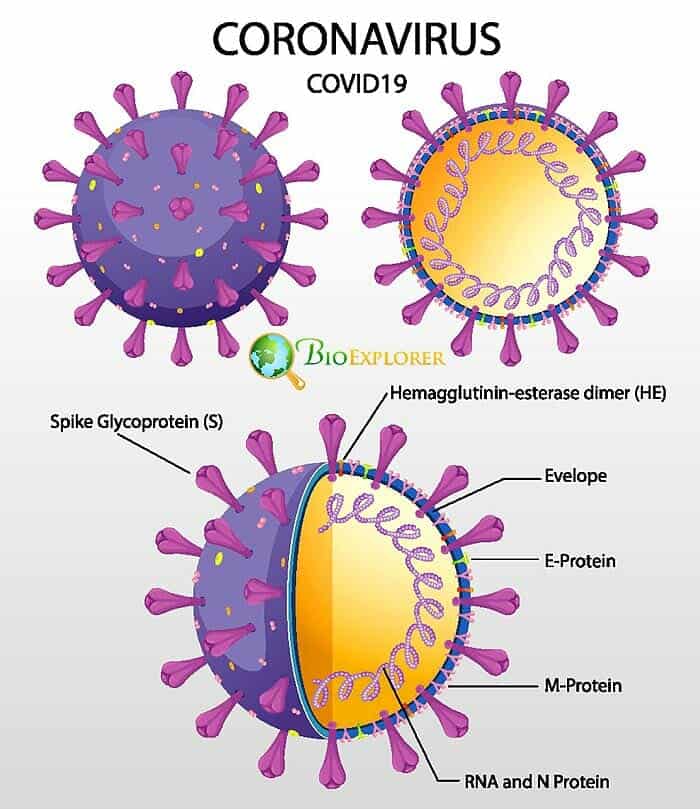
One of the essential components of the fight against the novel coronavirus SARS-COVID19 was careful analysis of the virus genome and meticulous studies devoted to the interactions between the new virus and its hosts in our cells.
A team at the Translational Genomic Research Institute, Phoenix, AZ, USA, has compared the contents of the new viral genome with its closest relatives- coronaviruses of other animals, including bats. As a result, they have found out that:
- The novel coronavirus has a unique region in its DNA that is not translated and inherited from earlier coronaviruses.
- This area of the genome interacts with a microscopic RNA – miR1307.
- This microRNA does not carry information about a future protein.
- Instead, it can switch genes on and off.
- The interactions between the microRNA in our cells and the virus’s genome can vary depending on the host – namely, the unique features of our own genomes.
- Sometimes, these interactions can make the virus more deadly, and in other cases, can weaken its effects on our cells.
- The researchers hope that this new information can help develop new vaccines or therapies against the COVID10 infection.
![]()
7. Sequencing a global threat – a new sequencing platform makes quick, reliable sequencing of viruses possible [France, January 2020].

The method of determining the sequence of nucleotides in the DNA called sequencing is crucial for many scientific applications, from understanding gene functions to determining the properties of various pathogens.
It is especially crucial during pandemics caused by new agents as it helps mount an appropriate response that can potentially save lives. However, when the first cases of 2019-nCOV were reported in Wuhan, China, the importance of this new virus was still unclear.
Initially, the Chinese authorities have provided the sequence of the new virus to the other health authorities.
In January, the first three cases of suspected 2019-nCOV were detected in France. The national reference center at the Institute Pasteur, France, has obtained the samples of these patients:
- The samples were received on January 24, 2020.
- The researchers at the CNR have started sequencing immediately, using the new platform called Mutualized Platform for microbiology (P2M).
- With the help of this platform, the sequencing and checking were done in three days.
- The obtained sequence was immediately shared for public analysis.
- Usually, a new genome sequencing can take up to 10 days, so this was an extremely high level of speed and accuracy.
This analysis has started a new era of scientific research and collaboration that is still crucial for our continuing fight against COVID19.
![]()
8. The RNA secret to COVID19 – The researchers find new ways the viral genome uses in the cell [UK-Germany, November 2020].
COVID19, a virus responsible for the current global pandemic, belongs to the coronaviruses group. Coronaviruses have several unique features. For instance, their genome is composed of RNA, not DNA.
Also, the RNA of coronaviruses is unusually long compared to other organisms.
Studying the features of the new virus in detail is crucial for developing therapies against it. Unfortunately, most researchers focus on the proteins that the virus produces, as those proteins interact with our cells and produce the actual damage.
Still, would it not be more productive to prevent making those dangerous proteins in the first place?
To do this, two research teams, one from Cambridge and another from Justus Liebig University, Giessen, Germany, have focused their study on the large RNA genome of the virus and how it interacts with cellular machinery.
- In a regular cell, the RNA is used as a direct template for the production of proteins.
- A specialized structure from the cell called a ribosome participates in this process.
- In the case of coronaviruses, the RNA genome is used both to produce proteins and make smaller RNAs that participate in regulation.
- The main RNA genome can form complex structures with those smaller RNAs and the distant regions of the primary genome itself.
- The research team has developed a new method called COMRADES that allows seeing these interactions in detail.
- Scientists have found that in SARS-COV-2, the RNA genome forms a specialized structure that allows the ribosome to skip the “stop” signal on the RNA.
- This leads to making proteins that can be different in length and function.
- This way, a coronavirus can change its properties without changing its actual genome.
- If this structure is disrupted, the virus becomes less virulent.
This discovery is crucial for understanding the new coronavirus’s properties and understanding similar viruses better. The authors are also hopeful their discovery can help with possible antiviral therapies.
![]()
9. Looking into mammoth’s past through the DNA – the scientists determined possible causes of the final extinction of wooly mammoths [USA, February 2020].
There is much debate about the extinction of mammoths. The dominant theory is that the first humans hunted the wooly giants to extinction.
This theory is corroborated by the archaeological finds and the unfortunate human tendency to drive the extinction of living things.
Lately, it was found that the remnants of the Ice Age giants found in Siberian permafrost are preserved to such a high degree that it is possible to extract the DNA from them. A research team from University at Buffalo, NY, USA, have extracted the genetic material from a small isolated population located at Wrangel Island in northernmost Russia:
- The population of Wrangel Island mammoth was the last to go extinct around 4000 years ago.
- The mammoths were isolated from the mainland and were forced to breed with close relatives, thus gathering mutations.
- The researchers have compared the genomes of:
- Present-day Asian elephants.
- Older mammoth remains before the extinctions.
- The data from a mammoth that used to live around 20000 years ago.
- The genetic data from the Wrangel Island mammoth dated around 4000 years ago.
- The comparison of genomes allowed the geneticists to find the mutations unique for Wrangel mammoths.
- The analysis has revealed 115 possibly harmful variants in 112 genes.
- The suspicious negative variants were introduced into the cell culture to find the potential consequences of these mutations.
- The research has revealed that the mammoth at Wrangle island had genetic defects that:
- Led to dysfunction in their sperm cells.
- Led to reduced fertility.
- Led to problems in the gastrointestinal tract.
- Led to severe damage to the sense of smell, which prevented the animals from successfully finding food.
This study was performed so diligently that it basically resurrects the potential problems the last mammoths on Earth have encountered. However, it also shows the potential of new genetic and cellular engineering methods for revealing crucial evolutionary problems.
Suggested Reading:
Woolly Mammoth Clone Project: Can It Be Resurrected?
![]()
10. Surprising secrets of a small chromosome – Y chromosome containing critical regulatory elements [Canada, September 2020].

The Y chromosome is a so-called sex chromosome. Its primary function is the determination of sex in the future baby – whether it develops into a woman or a man. The Y chromosome is relatively small and contains significantly fewer genes than its counterpart – the X chromosome.
These genes are mainly responsible for the development of sperm or other male-specific features. Recently, C. Deschepper from the University of Montreal, Canada, has discovered another component of this small chromosome:
- The human Y chromosome contains so-called regulatory genes – Uty and Ddx3y.
- The influence of these genes can be changed depending on how many copies of these genes are present.
- The researchers introduced the human Uty gene into mice and switched this gene off in one group of mice.
- The products of these genes influenced multiple neighbor genes and also regulatory RNA molecules called long non-coding RNAs.
- This small gene group can influence the activity of up to 700 genes in the cell.
This discovery means that Y chromosome genes can significantly influence the body’s normal cells, not only the cells responsible for reproduction. As the influence is multi-faceted, multiple additional studies would probably follow this discovery to determine those effects.
![]()
Current genetic methods have revealed another layer of complexity to the structures that determine our present and future. Moreover, new methods of analyzing ancient DNA can also get us a glimpse into the past. Finally, the activity of geneticists is also crucial in the fight against the current pandemic, as multiple COVID-related studies show.
Genetics can fight the rumors about the artificially created virus and lead to new therapies against this novel foe. Geneticists also can help us understand our green neighbors better – multiple studies show the secrets of carnivorous plants and the intricacies of the plant’s day-to-day life.
The importance of genetics in the current world is not to be underestimated, as the variety of discoveries presented here shows.
![]()


